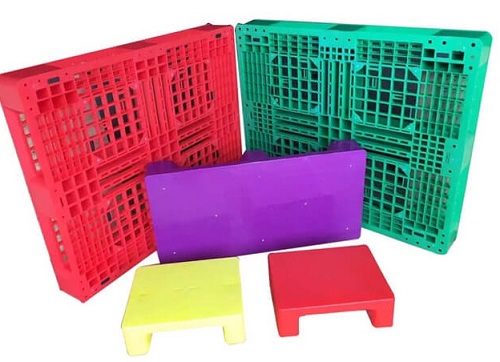PolymPart: It’s too late to call the exterminators. By the time December 2018 arrives, the Earth will be crawling with over 11 billion “things” connected to the Internet, and there is no turning back. So is the time finally at hand for some of those IoT devices to be your pallets?

The Internet of Things (IoT)
The Internet of Things (IoT) refers to the connection of devices to the Internet and each other. IoT items include everything from your smartphone, Apple watch and household appliances to manufacturing and transportation equipment. In industry, such sensors enable the capture of vast amounts of data. Such “Big Data” can help companies make more-informed business decisions.
The point of IoT isn’t about the sensors, of course; it’s about the insights they can provide. In warehouses, connected pallets and items will enable smarter inventory management. For freight operations, the tracking and tracing of goods “become faster, more accurate, predictive and secure while analytics of a connected fleet can help to predict asset failure and to schedule maintenance checks automatically,” noted a report from Cisco and DHL. Even in the last mile of delivery, the connection of delivery personnel, delivery vehicles and people is seen as a way of delivering faster, more reliable and more cost-effective delivery execution.
IoT for pallets
But what about IoT for pallets? Sensor-equipped pallets are predicted to become increasingly crucial in IoT enabled supply chains, according to Berg Insight. The consultancy believes that connected pallets rank as the most promising greenfield IoT opportunity, facilitated by low-cost LPWA (low power, wide area) cellular and noncellular technologies. Initially, Berg Insight believes that IoT will find traction in industries with high-value goods or with strict regulatory oversight.
Another attractive use case will relate to the more efficient management of proprietary and commercial pallet pools, a development which will make the use of plastic pallets increasingly profitable. First of all, because plastic pallets last much longer than timber pallets, the IoT cost on a per trip basis will be much lower for plastic.
At the same time, one of the leading concerns about investing in long-lasting plastic pallets has been the fear of pallet loss and the cost of replacement. No surprise, however, IoT-enabled pallets provide better visibility and accurate accounting of who exactly has the pallets. They are at trading partner B, C and D, and they need to be picked up. IoT in combination with the appropriate software can enable cost-effective pallet management and the elimination of their loss.
The relationship between IoT and plastic pallet adoption can go together like a crisp Chablis with vintage Cheddar. Plastic pallets will be more highly demanded to help reduce the cost of IoT hardware, and at the same time, IoT technology will boost pallet user confidence toward introducing them into their supply chains without fear of pallet loss. With the insights provided through increased visibility becoming increasingly valued, IoT and plastic pallets just might prove to be the perfect pairing for your supply chain.
Source: http://blog.polymerlogistics.com/internet-of-things-and-plastic-pallets-a-perfect-pairing/
